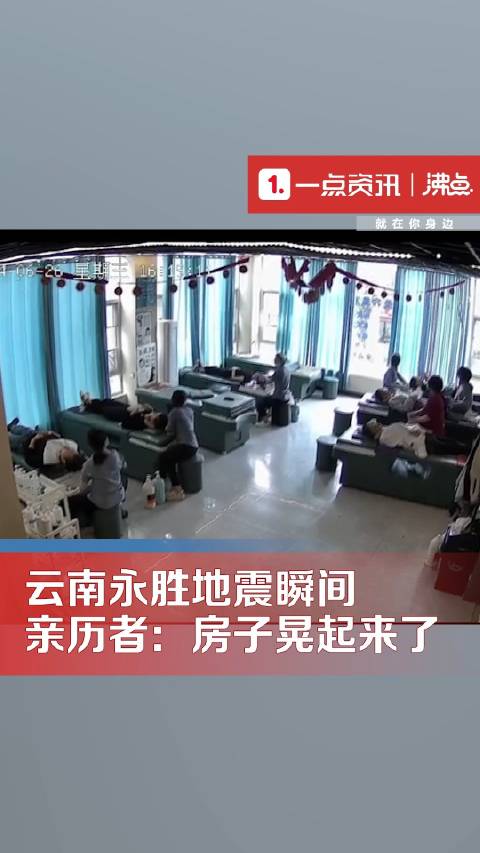This year marks the 75th anniversary of the founding of the People's Republic of China. While the nation celebrates its achievements, it continues to take on the critical task of fulfilling the ambitious goals set forth in the 14th Five-Year Plan (2021-2025).
To keep the public up to date on progress made in this regard across the country, the State Council Information Office (SCIO) hosted a series of press conferences on the regional efforts of promoting high-quality development.
From March 19 to June 14, senior officials from each of China's 31 provincial-level regions came to Beijing to provide a comprehensive overview of their work and future plans. These events offered a unique window into China's dynamic regional developments, revealing the country's commitment to high-quality development through developing new quality productive forces, higher levels of opening up, and green transitions.
New quality productive forces
Marked by innovation, new quality productive forces represent a departure from traditional economic growth models, aligning with China's new development philosophy which prioritizes innovation and sustainability. They encompass high-tech, efficient, and high-quality productivity methods.
Officials from China's capital Beijing said that the city will focus on building itself into a major international sci-tech innovation center and leveraging its capital city status to develop new quality productive forces.
In 2023, technology contract transactions in Beijing exceeded 850 billion yuan (US$119.74 billion), with an average of 337 technology enterprises established daily, said Beijing Mayor Yin Yong at a press conference on March 19.
Amid a new round of global technological and industrial changes, the capital city will continue to improve its sci-tech research capabilities, deepen the reform of the sci-tech system, and strengthen efforts to cultivate and introduce new talent, Yin said.

On March 28, 2024, the State Council Information Office holds a press conference in Beijing about Shanghai's efforts of promoting high-quality development. [Photo by Zhao Yifan/China SCIO]
Officials from China's eastern metropolis Shanghai said the city aims to upgrade traditional industries, like automotive, steel, and chemical engineering through digital and green low-carbon transitions, as well as through leveraging new technologies, models, and business forms, so as to make traditional industries a cornerstone of new quality productive forces.
While prioritizing the development of its three leading sectors including integrated circuits, biomedicine, and artificial intelligence, the city has made plans to break through bottlenecks in technologies, improve the resilience and security of its industrial and supply chains, and build multi-billion dollar industrial clusters in electronic information, advanced materials, trendy consumer goods, and other sectors.
Shanghai Mayor Gong Zheng said that the city will continue to focus on emerging sectors like the digital economy, green low-carbon industries, the metaverse, and smart devices, and plans to be an early mover in future-oriented sectors like healthcare, smart technologies, energy, space, and new materials.

A five-seat electric vertical take-off and landing (eVTOL) aircraft takes flight in its demonstration near Shekou Cruise Home port in Shenzhen, southern China's Guangdong province, on Feb. 27, 2024. [Photo/Xinhua]
The southern economic powerhouse Guangdong has been pioneering future-oriented industries, especially in the low-altitude economy. The province currently dominates the consumer drone market, with products making up 90% of the national share and over 70% of the global market.
In February, Guangdong witnessed the maiden flight of the world's first cross-sea and cross-city electric air taxi. This route, connecting Shenzhen to Zhuhai, takes about 20 minutes by air, compared to roughly 2 hours and 45 minutes by car.
Guangdong Governor Wang Weizhong announced at a press conference on March 29 that the province plans to start manned flights by 2026, potentially giving rise to a new trillion-yuan industrial cluster.
High-level opening up
Various regional governments in China said they will remain committed to opening up further to the outside world, and promote free trade and free market.
Liu Xiaoming, governor of southern island province of Hainan, said it is accelerating preparations for independent customs operations while taking steps to promoting socioeconomic development, seeking to position itself at the forefront of China's high-level opening up.
Hainan has put in place a free trade port policy system featuring "facilitation and liberalization for the flow of trade, investment, cross-border capital, personnel and transportation, and the secure and orderly flow of data," Liu said.

This aerial photo taken on April 4, 2023, shows the Haikou International Duty-Free Shopping Complex in Haikou, southern China's Hainan province. [Photo/Xinhua]
Foreign investment in Hainan has been on the rise, with the number of newly established foreign-funded enterprises in the province growing at an average annual rate of 65% since 2018, Liu said. There are currently 6,543 foreign-funded enterprises operating in the province, he added.
Serving as a gateway to ASEAN countries, southern China's Guangxi Zhuang autonomous region aims to provide more convenience for business operation and the dual circulation of domestic and international markets.
"We aim to greatly enhance facilitation in investment, trade, consumption, capital flow, exchanges, logistics and transportation," said Lan Tianli, chairman of the autonomous region, adding that further improvements will be made in transportation, cross-regional industrial and supply chains, systematic opening up, and business environment.
Currently, Guangxi is building the Pinglu Canal, the first major canal project since the founding of the People's Republic of China. The Guangxi governor said the project will significantly streamline logistics between southwestern China, western China, and ASEAN countries once completed.
Lan said the region will also fully align itself with the trade rules of the Regional Comprehensive Economic Partnership and seize more development opportunities by better integrating with the neighboring Guangdong-Hong Kong-Macao Greater Bay Area.
With 60% of its GDP attributed to foreign trade, the development of an open economy is of paramount importance to Zhejiang, said the province's vice governor, Lu Shan.
To attract global enterprises, Lu said Zhejiang is committed to creating a world-class business environment. He said that the province will implement a management system for foreign investment featuring pre-establishment national treatment and negative list, and regularly host roundtable meetings with foreign enterprises to address operational challenges. "We sincerely hope more outstanding foreign enterprises will choose Zhejiang as a key investment destination in China," Lu said.
The province also aims to strengthen its presence abroad by leveraging the economic activities of its extensive global diaspora. "We will promote actions to expand markets and increase orders, supporting private enterprises in global expansion," Lu said. At the press conference, he revealed Zhejiang's plans to develop overseas industrial parks, build small yet impactful Belt and Road e-commerce projects, and nurture local multinational companies.
Green, low-carbon development
In its pursuit of high-quality development, China is also accelerating its pace of green transitions.
The country's coal-rich Shanxi province is rapidly modernizing its coal mining operations with intelligent technologies and exploring alternative energy sources as part of a major push toward green development.
Currently, all underground coal mining operations in Shanxi are mechanized, and 54% of its coal production capacity is achieved through intelligent mining. Over 80% of its coal production capacity stands at an advanced level, said Shanxi's Executive Vice Governor Wu Wei on May 15.
He said Shanxi is also vigorously producing unconventional natural gas and prioritizing the development of new energy sources. More than 90% of new buildings in the province are green structures, and over 90% of heating systems in both urban and rural areas utilize clean energy, Wu said.
Northern China's Inner Mongolia autonomous region is leveraging its abundant wind and solar power potential to revolutionize its energy landscape, transforming itself into a hub for clean, sustainable power generation, according to its senior officials.
Last year, Inner Mongolia supplied 306.5 billion kilowatt-hours of electricity to areas outside the autonomous region, which was triple the annual output of the Three Gorges Dam, said Wang Lixia, the autonomous region's chairwoman.
In pursuit of green development, Inner Mongolia plans to take the lead in the country to establish a new energy-dominated supply system and a new power system, said Huang Zhiqiang, executive vice chairman of the autonomous region.
As part of its ambitious green transition goals, the scale of installed capacity of new energy in Inner Mongolia, which has already exceeded 100 million kilowatts, will surpass that of thermal power by 2025, and its new energy power generation will exceed thermal power generation by 2030, Huang said.

This aerial photo taken on June 9, 2022, shows sheep walking through a photovoltaic power station in Gonghe county of Hainan Tibetan autonomous prefecture, northwestern China's Qinghai province. [Photo/Xinhua]
In pursuit of sustainable and high-quality development, Qinghai province emphasizes transforming its ecology and economy through "vigorously advancing the industrialization of ecology and the ecologicalization of industry," Governor Wu Xiaojun said at a press conference on May 24.
Wu cited the "photovoltaic sheep" project, where solar panels installed in the desert reduced water evaporation by 30% and wind speed by 50%, transforming barren land into green pastures and increasing income for farmers and herders. "The project is a triple-win that synergizes ecological protection, clean energy development, and increased income," Wu said.
Last year, Qinghai's installed clean energy capacity exceeded 51 million kilowatts, accounting for 93% of its total capacity. The province is also leveraging its clean energy advantages to advance green industries. For instance, Qinghai's dry, cool climate allows data centers to use 40% less energy for cooling compared to the national average. Moreover, Wu noted that developing the computing sector in Qinghai is estimated to reduce costs by 20% and operating expenses by 30%, with a shorter payback period, making the province a premium destination for developing the green computing industry.
Follow China.org.cn on Twitter and Facebook to join the conversation.ChinaNews App Download















